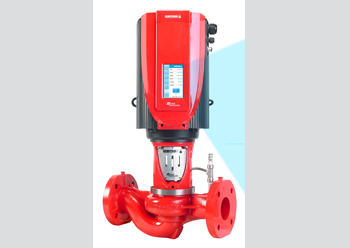Smart pumps get to the heart of the matter
Smart pump solutions can reduce energy consumption, enhance cost savings and optimise occupant comfort in buildings, says KEVIN LAIDLER – Sales Director, Middle East and Africa, Armstrong Fluid Technology*.
01 February 2022
Buildings are complex ecosystems, formed from diverse elements that must seamlessly integrate to create safe and comfortable indoor spaces. Buildings can be compared to human bodies, that also comprise many moving parts that come together to serve a holistic function. If a building is like a body, then a pump is the heart. Pumps play a key role in a building’s heating, ventilation and air-conditioning (HVAC) and plumbing systems, responsible for powering the smooth operation of the facility.
Although pumps remain out of sight, they are deeply linked to sustaining human life in buildings. They supply and transport water for heating and cooling throughout a building, helping to create indoor environments that support occupant health and sustainability.
However, building facilities also account for a major portion of energy consumption – responsible for an estimated 40 per cent of all energy usage, and a similar proportion of greenhouse gas emissions.
 |
|
Kevin Laidler |
In the Middle East, energy consumption has actually grown faster than GDP since 1980. Fuelled by rapid population growth, a flourishing construction landscape and the expansion of energy-intensive industries, energy consumption rates in the Middle East are amongst the highest in the world.
With continued urbanisation in the region, future energy demands are expected to grow. Fortunately, there is also agrowing green consciousness to address these demands in a safe and sustainable way. The UAE, for example, has outlined a strategy to reduce its carbon footprint by 70 per cent by 2050.
One way of reducing energy consumption while maintaining occupant comfort in our building is by improving energy efficiency. For HVAC and plumbing systems, approximately five per cent of the lifetime carbon footprint can be traced to the manufacturing of components. The other 95 per cent comes from energy usage during the operating life of the equipment. Clearly, only by improving performance deficiencies can we truly address energy efficiency.
Furthermore, HVAC and plumbing systems operate highly efficiently when first installed. However, over time, system efficiency ‘drifts’ away from the original levels of performance. This is known as performance drift, which ultimately leads to energy waste, high operating costs and more greenhouse gas emissions. As performance drift continues, system performance deteriorates, which may also result in more failures or reduced comfort for occupants.
In my experience with Armstrong Fluid Technology, the greatest opportunity to enhance energy efficiency lies in our choice of HVAC and plumbing systems. Choosing the right smart systems is key to creating a high-performing building that better supports sustainability. In the last decade, technology for HVAC systems has been enhanced to deliver up to 70 per cent energy efficiency savings compared to traditional systems.
For example, variable speed pumps, such as Armstrong Design Envelope Pumps, are an effective solution to optimise system performance in your building. These pumps respond to real-time system conditions to dynamically adjust equipment operation and match system demand. So the heart of your system now has a brain. The result is highly efficient systems that deliver substantial energy savings and costs compared to conventional fixed speed pumps. These pumps also reduce the carbon footprint, as they can be mounted in the pipeline, regardless of size, as they do not require the inertia concrete bases.
These pumps can also be particularly effective in addressing regional HVAC challenges. In the Middle East, cooling systems work particularly hard to counteract the warm climate. Upgrading cooling systems using variable speed pumps is another key opportunity to improve energy efficiency. These smart pumps can be integrated with Active Performance Management systems, like Armstrong’s Pump Manager solution, that enables pump performance to adjust automatically according to system load to run at lower speeds and reduce the impact of performance drift. Innovations such as these enable pumps to operate at optimum levels based on demand to consume as little energy as possible. They also help enable condition-based maintenance, providing real time alerts when they detect issues, allowing for early detection to prevent failures and service disruptions.
As we look to creating a greener future for all, each industry must play its part in supporting sustainability. In order to truly drive energy efficiency across industries, what is needed in the region is an integrated energy efficiency strategy. We must look at long-term benefits, rather than just short-term costs, to select solutions that better support people, and our planet.
* Armstrong Fluid Technology is a manufacturer of intelligent fluid flow equipment.
- SFI pioneers UL certified ventilators
- Smart pumps get to the heart of the matter
- Nuuka offers AI route to self-optimised systems



